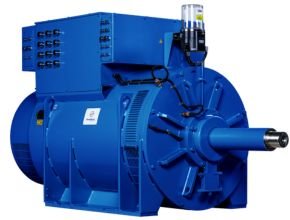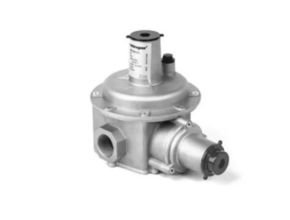What is Hydropower?
Hydropower, or hydroelectric power, is one of the oldest and largest sources of renewable energy, which uses the natural flow of moving water to generate electricity. Hydropower currently accounts for 28.7% of total U.S. renewable electricity generation and about 6.2% of total U.S. electricity generation. While most people might associate the energy source with the Hoover Dam—a huge facility harnessing the power of an entire river behind its wall—hydropower facilities come in all sizes.
Some may be very large, but they can be tiny, too, taking advantage of water flows in municipal water facilities or irrigation ditches. They can even be “damless,” with diversions or run-of-river facilities that channel part of a stream through a powerhouse before the water rejoins the main river. Whatever the method, hydropower is much easier to obtain and more widely used than most people realize. In fact, all but two states (Delaware and Mississippi) use hydropower for electricity, some more than others. For example, in 2020 about 66% of the state of Washington’s electricity came from hydropower.
What Is The History Of Hydropower
The history of hydropower dates back thousands of years. For example, the Greeks used water wheels to grind wheat into flour more than 2,000 years ago. The evolution of the modern hydropower turbine began in the mid-1700s when a French hydraulic and military engineer, Bernard Forest de Bélidor, wrote Architecture Hydraulique. Many key developments in hydropower technology occurred during the first half of the 19th century, and more recently, the past century has seen a number of hydroelectric advancements that have helped hydropower become an integral part of the renewable energy mix in the United States.
What Are The Benefits Of Hydropower
The benefits of hydropower have been recognized and harnessed for thousands of years. In addition to being a clean and cost-effective form of energy, hydropower plants can provide power to the grid immediately, serving as a flexible and reliable form of backup power during major electricity outages or disruptions. Hydropower also produces a number of benefits outside of electricity generation, such as flood control, irrigation support, and water supply.

Technical Features:
- Series: C3G, C4G (low voltage) C3GH, C4GH (medium voltage)
- Power: Up to 3400kW
- Voltage: Up to 6600 V
- Frame: 280 to 710
- Pole: 2 to 16
- Frequency: 50 Hz, 60 Hz or variable speed
- Protections Degree (IP): IP23
- Cooling Method (IC): 01, 06
- Ambient Temperature: -20°C to +60°C
- Enclosure Material: Welded steel
- Bearing: antifriction, sleeve (from frame 355)
- Applications: Cross-Flow turbines, Francis turbines, Kaplan turbines, Pelton turbines, Turgo turbines
- Standard / Certificate: IEC 60034
Main Options:
- PT100 in stator windings
- Anti-condensation heaters
- Special voltage
- Arrangement for vibration sensors
- Insulated bearing and earthing brush
- Horizontal or vertical shaft design
- Neutral point terminals in separate terminal box
- Lubrication system for sleeve bearing
- Inlet and outlet filters for increased protection degree up to IP44
- Arrangement for air duct system to convey inlet / outlet cooling air
- Bearings arrangement suitable for high axial and radial forces coming from the turbine
- Special shaft end for direct coupling with turbine
- Additional flywheel for dedicated inertia value
- Brake system
Source: www.marellimotori.com
Read More Articels:
- bamo-variable-area-flow-metre-g6-g5-250
- trafag-9r5-picostat-railway-pressure-switch
- solinst-model-425-discrete-interval-groundwater-samplers
- adalet-quarter-turn-latch-terminal-enclosure
- emco-kimo-ktt-310-rf-thermocouple-temperature





